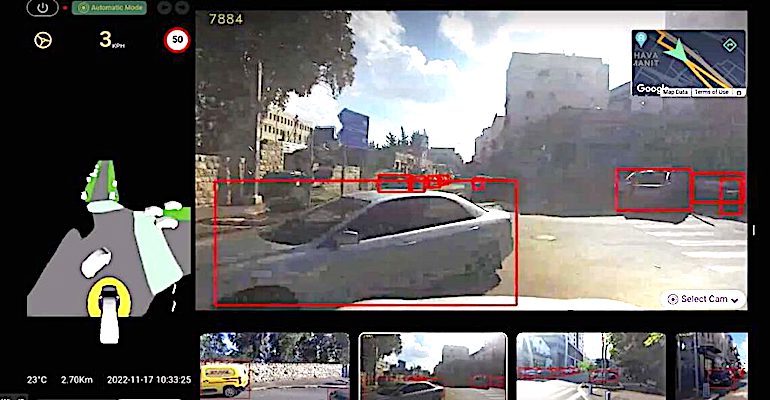Imagry Camera-Only Mapless Automated Driving System
Can cars really drive themselves using only cameras, without the aid of radar or lidar?

“You can observe a lot just by watching,” noted underappreciated sage and New York Yankees MLB Hall of Fame catcher Yogi Berra.
Eran Ofir, CEO of Israeli start-up Imagry, agrees. His company aims to provide autonomous vehicle technology that uses only cameras to watch the world, insisting that they observe enough to make sensors like radars and lidars unnecessary.
The credibility of this approach took a hit when Tesla boss Elon Musk removed radar from that company’s vehicles in a bid for their Autopilot and Full Self Driving driver assistance systems to pilot the cars without the aid of radar. The company quickly backpedaled and resumed employing radar after less than a year.
But the deficiencies with Tesla’s software and its approach of attempting to provide a vehicle capable of driving itself anywhere don’t apply to Imagry, said Ofir. Instead, the company is starting with a self-parking system that lets cars navigate their own way to find an available parking space. He says it can even read signs to ensure that it only parks in legal spaces to prevent you from getting a parking ticket!
Continental is convinced that Imagry is on to something, as the German Tier 1 supplier has signed a deal to incorporate the company’s mapless driving software into its Continental Autonomous Driving platform. Its first task is to provide autonomous parking.
This system, unlike the Mercedes/Bosch system, which works in pre-mapped garage structures, seeks out available spaces in any garage and can even use street parking spaces.
“Imagry’s technology approach is a great add-on to Continental’s software stack solutions for assisted and automated driving,” said Aniss Ouyeder, Head of Partnerships and Innovation at Continental Business Area Autonomous Mobility.
Imagry’s software is not only mapless, but it is also hardware-agnostic, so Tier 1 suppliers and carmakers can employ the cameras and processors of their choice to run Imagry’s software. The company has been testing cars using the software on public roads in Israel for three years.
But while Imagry feels confident in the capability of its system, they recognize the need to cultivate trust in others by starting smaller and progressively adding more abilities, said Ofir.
Imagry software combines AI technology that captures and recognizes a real-time video feed with a deep neural network to make complex driving decisions in real time, based on the driving conditions the vehicle is encountering.
It can process what it sees quickly enough to be effective because it uses a neural net to analyze the incoming video streams from the eight-camera system instead of applying a rules-based decision tree, which is how Ofir describes other automation systems.
Actually, the video goes to multiple neural networks, each of which is tasked with a different responsibility, such as object detection and identification or motion planning. Together they stitch together a 3D map of the surrounding world. The total processing power of the hardware underpinning the system is between 80 and 100 trillion operations per second (TOPS).
This compares to between 5 and 15 TOPS for today’s advanced driver assistance systems (ADAS). When Musk announced that Tesla’s cars would soon be able to navigate themselves independently from coast to coast, he boasted that the cars’ computers ran at 12 TOPS.
“Autonomous parking is just the first step in the path to full autonomous driving,” stated Ofir. “The capabilities of our mapless system extend easily to the open road, enabling the vehicle to operate freely in geographic areas which were previously unknown to it."
Imagry can do this because it spends years training its neural nets through supervised training, he said. Tesla, in contrast, is using its customers to train its system, which, considering the bad habits of some drivers, explains why the Internet is full of videos of Teslas doing absurd and/or dangerous things, Ofir said. “With unsupervised learning, you don’t know who are are imitating. Maybe it was a careless driver.”
Imagry hopes that by making incremental moves from parking to driving in limited circumstances that it can earn the trust needed for vehicles using its software to be allowed to drive autonomously anywhere.
Whether camera-only autonomy, or any autonomy, is possible remains to be seen. But Imagry’s incremental approach lends plausibility to the view that it is possible for such systems to observe enough, just by watching.
About the Author(s)
You May Also Like





